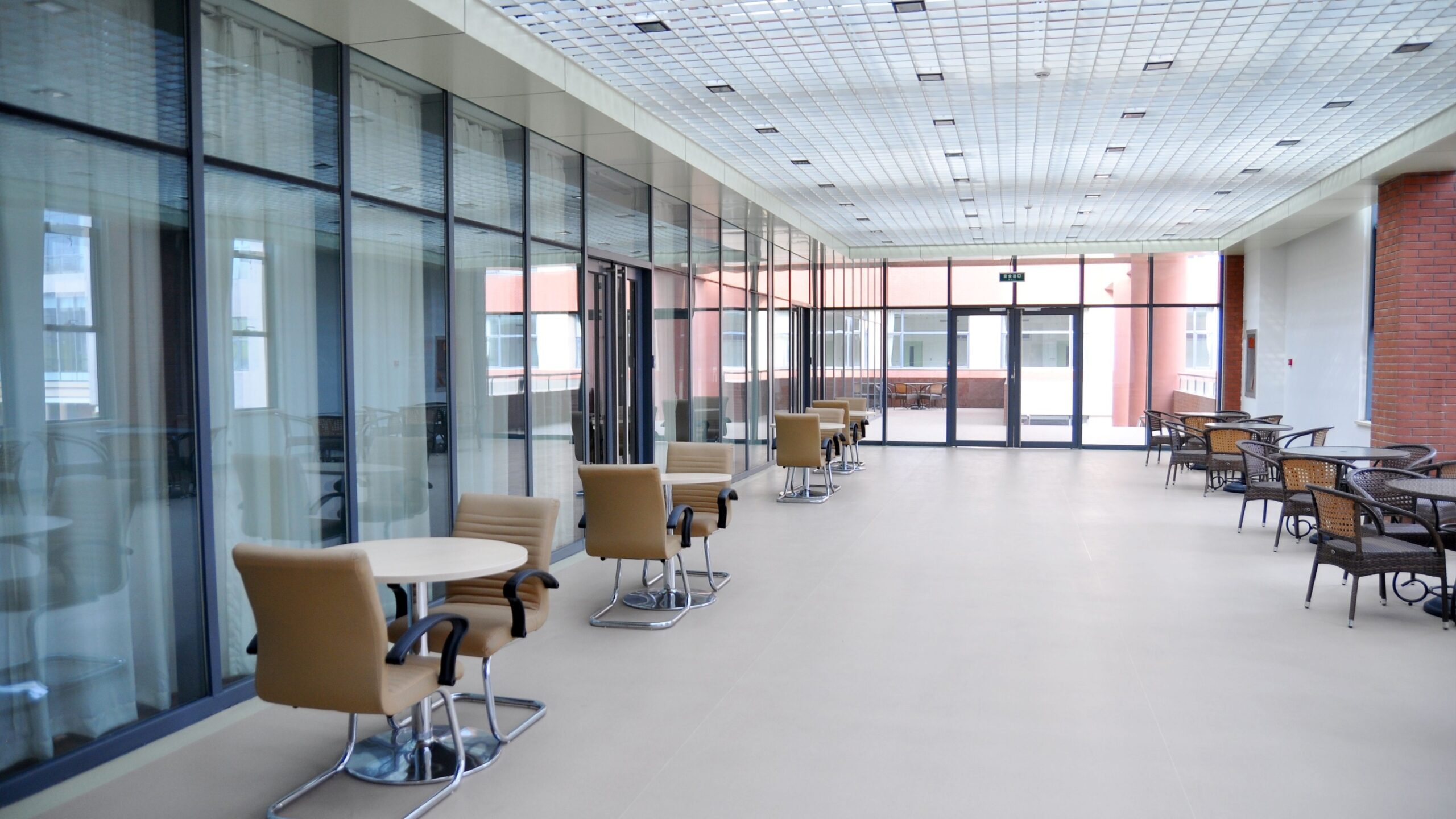Any approach to improving staff and student wellbeing must include the role of the built environment.
Individually, we are all probably aware of the impact the built environment can have on our wellbeing. The author who first drafted this article had the privilege of working on it while sitting in a quiet office, breaking occasionally for (another) cup of coffee from the nearby staff kitchen.
If they had written this in a busy shared workspace, with numerous interruptions, knowing they had to trek to the other side of campus for shots of caffeine, the process would have been far more frustrating and stressful. It may well also have taken longer and the finished result been less publishable.
For a moment, reflect on your own workplace and consider how it impacts the ways you think, feel, and act. You might consider examples such as the size, position and layout of study and work spaces, provision of social spaces, catering and contact with nature, accessibility of maps and signage, and the wider light and soundscape. Do these aspects of your environment have positive or negative impacts on your mood or how you act and approach tasks?
Historically, health interventions in education have frequently targeted the individual to motivate and change their behaviour, however, increasing acknowledgement is given to the social determinants of health, including living and working conditions. The importance of the workplace environment on our health and wellbeing is well documented, for example, there is a growing interest in environmental psychology, and the Health and Safety Executive (HSE) notes the importance of temperature, building safety, and noise.
Applying this to the university built environment, we can see multiple ways in which our productivity as well our wellbeing is influenced by our surroundings. However, while the HSE may focus on understanding and managing risks, we can go beyond this to ask how optimal wellbeing could be encouraged by creating health promoting universities.
How does the university built environment impact wellbeing?
Previous research has noted the impact of communal space on social relationships at university – for example this paper notes the ways it helps to increase social connectivity and build a greater sense of community.
But there are tensions in managing different, even oppositional needs within the staff and student body, such as the demand for quiet versus vibrant spaces – and therefore universities need to understand the complexity of managing diversity.
An important recognition of the interaction between the built environment of higher education and wellbeing took place in the University Mental Health Charter. This emphasises the need for a “whole university” approach to wellbeing, looking at the ways in which all aspects of university experience interact with both staff and student wellbeing.
The charter framework refers to both a university’s physical environment and residential accommodation. Under physical environment, it notes:
Given the amount of time that many staff and students spend on university grounds, there is a clear need to consider how the physical environment can be used to improve the wellbeing of the university community.
Under residential accommodation, the framework observes that “many students will spend more time in residential accommodation than in the classroom, making this environment of vital importance.”
What’s important in the post-Covid university built environment?
Building on the research which took place to inform the drafting of the charter, we have been conducting surveys and focus groups to investigate both staff and student perceptions of how the university’s built environment impacts upon their wellbeing.
The surveys are still open for participants, either staff and students or residential accommodation providers – do share your thoughts.
However, our initial findings, along with a review of existing research, point to a number of preliminary conclusions. First of all, despite increased opportunities for hybrid work and study at universities, the built environment remains an important influence on staff and student wellbeing. It can influence choices of location for employment or study, the amount of time spent at the university, opportunities to connect and build relationships, and levels of concentration and focus.
Small day-to-day aspects of university life can make a significant difference, from levels of heating within buildings, to the provision of appropriate lighting, to the accessibility of toilets and other facilities. And often everyday experiences are influenced and framed by broader institutional decisions and policies – for example, on whether to prioritise staff or student needs in certain buildings.
We’re seeing that the ways in which university spaces are used is evolving as part of this wider post-Covid shift, such as hot desking becoming more common. Given that these trends have been reported to undermine positive and productive practices and cultures, such architectural changes can highlight tensions between institutional priorities – particularly financial ones – and the wellbeing of individuals.
Universities still have to deal with the challenges presented by their existing estates portfolio. These often include older buildings which may be unfit for purpose and difficult to demolish or modernise. The position of these buildings can also mean attempts at modernisation resulting in complex negotiations between the university and other parties, such as local authorities and neighbouring land-owners.
And importantly, staff and students with disabilities appear particularly likely to have their wellbeing detrimentally impacted by the built environment because of the additional challenges they often face in terms of accessibility. Similarly, individuals with specific needs, such as a person needing a private space to express milk for a baby, may be particularly impacted.
Promoting wellbeing through the built environment
There is no “one size fits all” solution to developing a university built environment which promotes staff and student wellbeing. Certain standards are mandated by legislation. There is also valuable wider guidance available, such as the International Organisation for Standardization’s ISO 10075-2:2024 on ergonomic principles related to mental workload, and the UK government’s National Design Guide. However, there are also steps which individual universities can take to develop their work in this area.
For example, establishing robust and replicable methods of consultation with relevant stakeholders – this could also be developed into a more intensive co-creation process to ensure that all voices are represented during built environment projects.
Universities should also ensure that relevant individuals within Estates and other relevant teams are appointed to explicitly identify, discuss and consider wellbeing-related issues. This is not to suggest that responsibility should solely be delegated to such individuals. However, having people with the appropriate qualifications, training and experience to lead on and progress work on the built environment and wellbeing is important – and a number of universities are already doing this, demonstrating that it is possible.
It’s also important to provide clear lines of communication for ongoing issues that arise. This should be available to report and discuss larger problems, such as the lack of appropriate classroom space for wheelchair users. However, it should also cover smaller issues, from replacing light bulbs to ensuring microphones in lecture rooms work properly.
To take a truly “whole university” approach to wellbeing, it is important that universities review their existing built environment through a wellbeing-focused lens. It is also vital that wellbeing considerations become integrated into the everyday workings of key teams, such as estates and accommodation. Taking this approach can benefit wellbeing and productivity for both staff and students.




